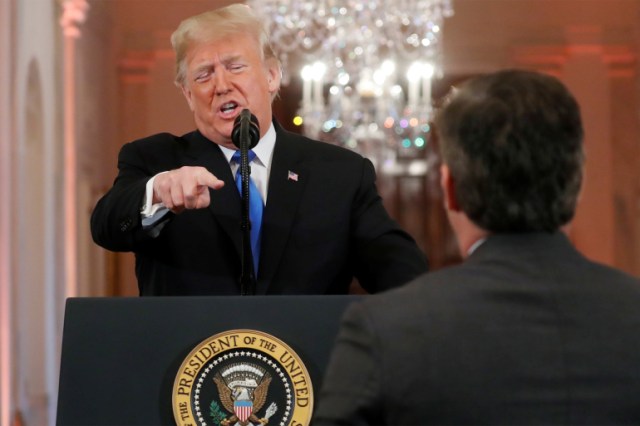The consequences of the angry protests and demonstrations that have plagued many American cities during the past two weeks against the background of the brutal killing of George Floyd of African descent by a white policeman in Minneapolis, Minnesota - to a number of the most important American newspapers.
The events caused the overthrow of James Bennett, the opinion editor of The New York Times, and Stan Wisnowski, editor-in-chief of the Philadelphia Inquirer.
The two senior journalists were forced to resign after pressure and anger that started from their colleagues inside the two newspapers and spread out, after publishing an article that did not satisfy the journalists for the first newspaper, and a headline considered "harmful" in the second.
The American press is being subjected to a difficult test, how it covers the unprecedented protests and demonstrations, which were accompanied by some violence from the demonstrators and a lot of police cruelty.
New York Times article and headline New York Times had published an article by Arkansas Republican Senator Tom Cotton called "We Must Summon the Army" to control the protests by showing strength to disperse, detain, and deter lawbreakers in various cities.
The publication of the article was greeted with a strong storm from within the newspaper, where many of its journalists saw it provide an excuse for repression, and exposed the lives of black journalists specifically to great risks.
As for the Philadelphia Inquirer, it published a headline on its front page, "Buildings are also important", which is considered harmful to the feelings of protesters against Floyd's killing, especially as it borrows the slogan of the "Life of the Blacks Mission is important" campaigning for equality with blacks with whites and monitors police violations against blacks.
Returning to the New York Times, who wrote an editorial explaining why the article was published before she apologized and suspended accepting Bennett's resignation, while the Philadelphia Inquirer published an apology, and pledged to take steps that would prevent such a mistake in the future before the editor resigned.
The repercussions of the article and title crisis were compounded by the occurrence of the newspapers in New York and Philadelphia, respectively, which witnessed many protests and confrontations between the police and demonstrators, as well as a lot of violence and theft of commercial interests.
No room for neutrality
Many protest leaders and some left-wing writers have accused the media of taking a negative stance from the exceptional moment the country is going through.
Some voices demanded that the media should not "follow the rules of professional and objective neutrality with a fascist administration calling for the use of violence and the army's intervention against peaceful protesters," as stated in the article by author Eric Alterman in The Nish magazine, calling on newspapers to stop "playing with fascism and democracy alike."
Senior officials in major newspapers reject those invitations, believe that their role and that of all the major media institutions should not become an opposition press, and assert the neutrality of their reporting.
Newspapers such as The Washington Post and The New York Times regularly record "Trump's lies", but newspapers do not take an opposition position from the president or his administration and adhere to professional standards in their coverage, and give ample space to present the president's and his administration's views on various issues.
Proponents of the principle of freedom to allow space for displaying dissenting views view that these newspapers have previously published articles for Russian President Vladimir Putin, Turkish President Recep Erdogan and Egyptian President Abdel Fattah al-Sisi, and none of them can be described as a champion of democracy or tolerant of his political opponents.
On the other hand, Al Jazeera Net has monitored patterns of media coverage loyal to President Trump of the demonstrations and protests that followed Floyd's death, which differ radically from the coverage of the most well-known media such as the Washington Post, the New York Times and CNN.
Right-wing newspapers like the New York Post and The Washington Times have focused on the chaos that accompanied the protests in the cities of Seattle, Washington state, and Portland, Oregon. The newspapers chose to display pictures on their front page during the protests, highlighting the violence and looting by a minority of protesters, especially on the streets of New York and Philadelphia.
Right-wing news websites close to the Trump administration, such as America One News, did not mention blacks' brutality of the police, instead focusing on showing the sacrifices of the police and the demonization of the left demanding a reform of racist police behavior.
Those methods also highlighted Trump's accusations of the left-wing organization Anteva, of being behind attacks on policemen and fueling violence in dozens of cities.
Another opportunity for Trump and the
President seized the opportunity of the protests to renew his attack on the media, Trump did not hesitate to mention reporters that they are "enemies of the American people" and did not stop accusing them of spreading fake news and encouraging violence and riots.
Trump did not hesitate to attack the New York Times after Bennett resigned, and said in a tweet, "The New York Times dismissed the opinion page official, he was fired after he published an excellent article for Senator Tom Cotton, where is transparency, we are proud of Senator Cotton. The New York Times publishes fake news."

